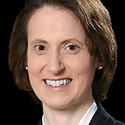10:59 AM
Great American's Piyush Singh Thrives as Change Agent
A gold certification by the U.S. Green Building Council under the Leadership in Energy and Environmental Design program for its skyscraper Cincinnati headquarters isn't the only precious asset at Great American Insurance Group. Shortly after Piyush Singh won his first Insurance & Technology Elite 8 award in late 2005, the property and casualty group at Great American scooped him up to become its senior VP and CIO.
Back then I&T had just honored Singh for transforming RLI Corp.'s "legacy-based back-office-focused" IT infrastructure into a "leading-edge, Internet-based front-end" system. In its January 2006 announcement of his appointment, Great American implied similar goals.
Yet Singh's efforts at the subsidiary of American Financial Group ($39 billion in total assets) have gone beyond IT modernization. He's spearheaded a cultural transformation of his IT organization's operational mindset as well as its relationship with the business -- putting him at the forefront of a paradigm shift occurring across the financial services.
"Before, we were order-takers," Singh says of his IT organization. "Now our role is to be engaged with our business partners so they can achieve market leadership or gain competitive advantage through innovative use of technology solutions."
For Singh, being a partner means more than understanding and responding to a particular business situation. "It's also about bringing in knowledge and insight from different industries across diverse product lines and business practices," he says.

Piyush Singh, Great American Insurance Group
Singh emphasizes that the goal of every tech project is engineering a solution that fits into the larger landscape, not simply automating manual processes. "We take a long-term perspective because business processes and technologies always evolve -- yesterday we built for the Web, today it's mobile and tomorrow it will be something else," he says. "What's critical is visioning and architecting broadly, so that whatever you build is sustainable."
In practice, such partnership-centricity sometimes requires his IT staff to take detours. This occurred early in Singh's tenure when mobile interfered with the move away from mainframe-based core applications.
"Three years into it, mobility hit us," he says. "Our job became deploying mobile, because mobility is absolutely changing the way we do business."
[5 Initiatives Spearheaded in Great American's Innovation Lab]
Regardless, for the core systems transformation, Singh's charted course replaced the P&C group's existing IT footprint with a heterogeneous mixture of integrated applications in an effort to leapfrog technology. Innovations included building the platform on a service-oriented architecture, an unheard-of strategy in traditionalist industries at that time.
According to Singh, performing an end-to-end transaction without any human interaction was the fundamental concept behind the new platform. "By 2009 we'd accomplished it for one business line, which essentially enabled us to connect all the pipes," he says.
Build, Buy, Integrate
What makes the feat notable is Singh's pursuit of a build, buy and integrate strategy as the gold standard, rather than acquiring a single vendor-developed platform.
Specifically, Singh's team built three major subsystems -- submission management, policy administration and enterprise data warehouse -- as well as numerous other components and services "wherever it provided us with competitive advantage," he says.
Other subsystems were purchased and integrated into the platform. These include rating (Accenture Duck Creek), forms (HP Exstream), billing and claims (Guidewire), producer relationship management (Ebix), CRM (Salesforce.com), enterprise content management (IBM FileNet) and enterprise service bus (Aurea, formerly Progress).
"We can swap out a particular technology if a vendor stops innovating or processes evolve that require a new way of doing things," he says. "As a result, our company will never have to endure a complete overhaul again."
Despite all of his contributions to the P&C group, Singh's humility is unwavering. "The biggest blessing at my job is the wonderful and really smart people I get to work with every day," he says. "I credit my entire success to being a member of the Great American team."
Singh is also an active participant in the larger insurance industry IT community, regularly lending his thought leadership. Peering into the future, he foresees a couple of "tectonic" shifts.
The first is consumer-centricity. "Our language and how we market our products is still very insurance-centric," he says. "That's about to change.""
To illustrate, Singh cites the airline industry, where only travel agents could issue tickets less than two decades ago. "Now, travelers not only buy tickets, but their boarding pass is delivered to their phone," he says.
The second game changer is driverless cars. As Singh points out, automobile accidents take an average of 30,000 to 35,000 lives annually.
Driverless cars, he argues, will expand transportation to the underserved, such as elderly and disabled individuals, while being safer. "Google's car has already proven it," says Singh. "If we can reduce fatalities even by half, that's 15,000 lives saved every year."
Anne Rawland Gabriel is a technology writer and marketing communications consultant based in the Minneapolis/St. Paul metro area. Among other projects, she's a regular contributor to UBM Tech's Bank Systems & Technology, Insurance & Technology and Wall Street & Technology ... View Full Bio





















